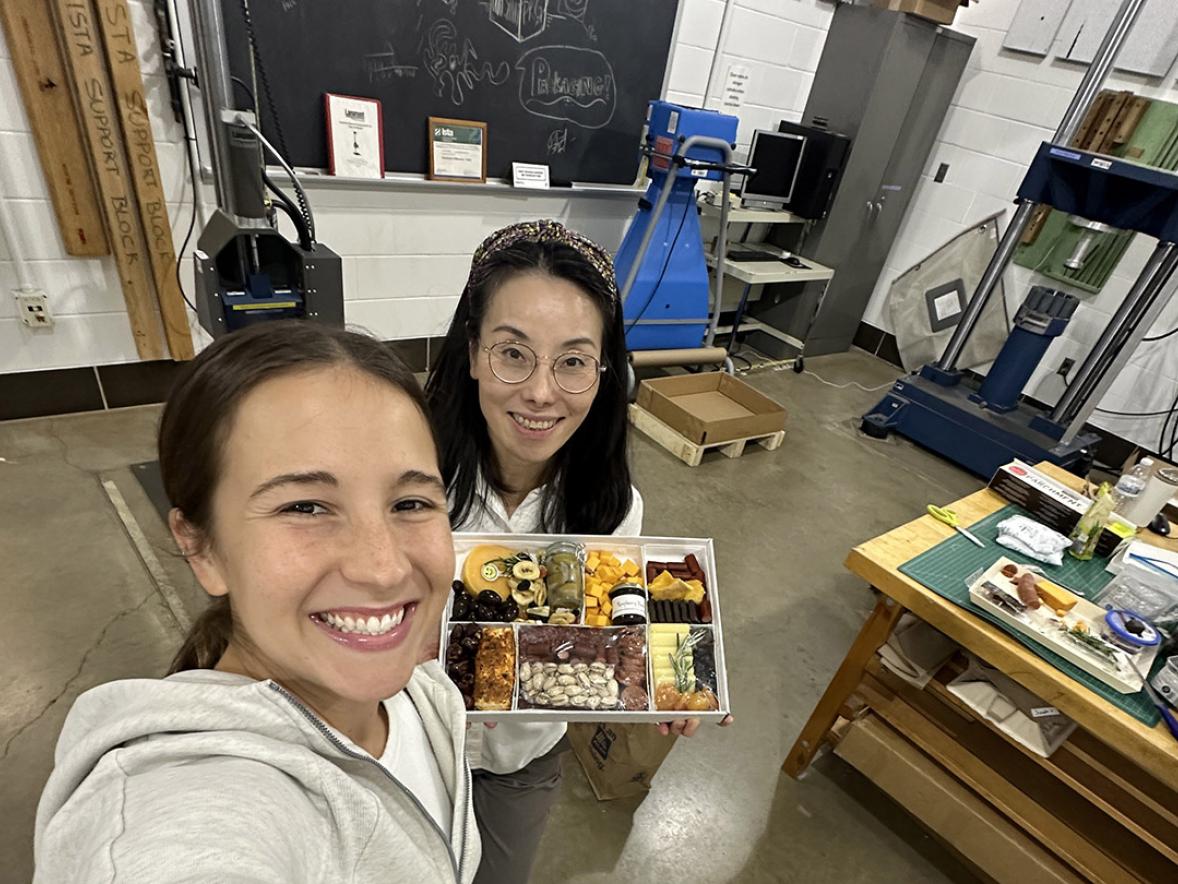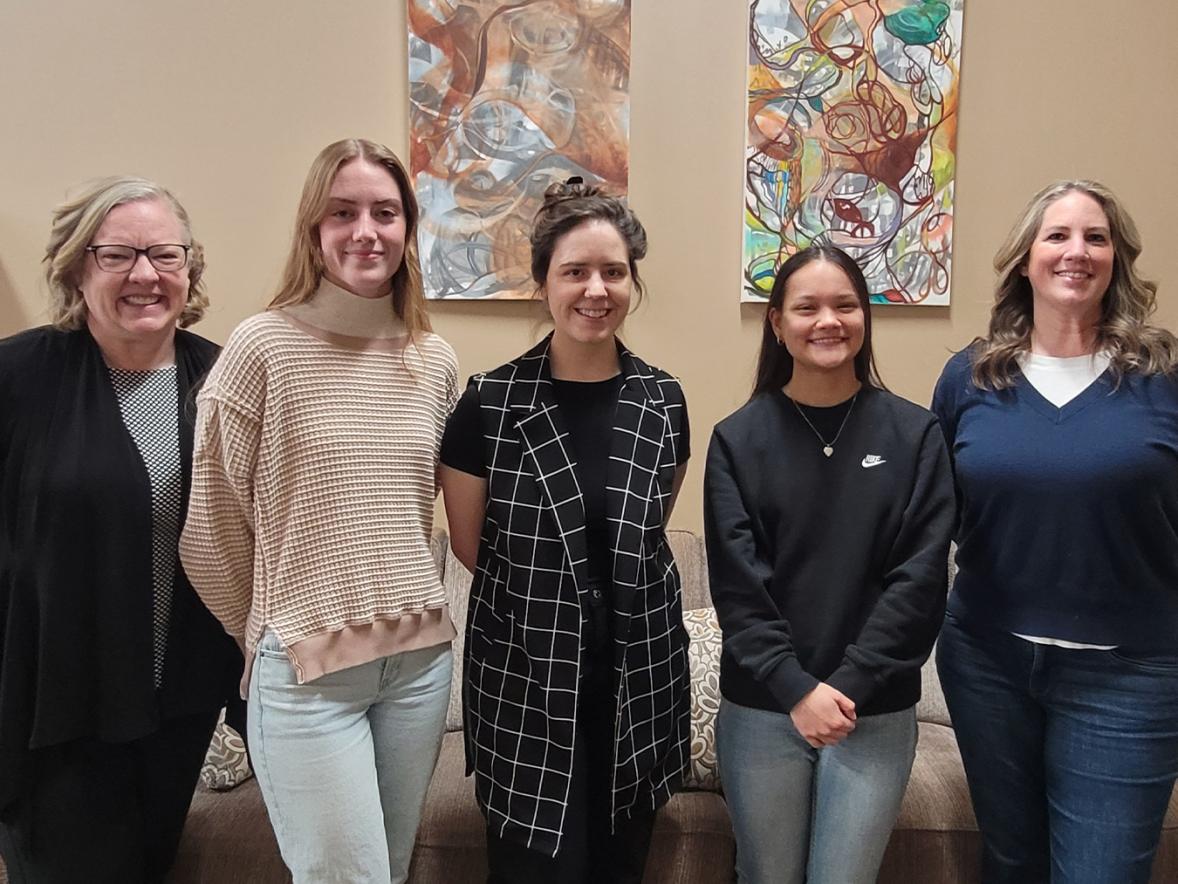This summer, people who use Half Moon Lake in Eau Claire, Long Lake in Polk County and other lakes in western Wisconsin and Minnesota likely won’t realize that they are reaping the benefits of the Wisconsin Idea.
The Wisconsin Idea is a century-old belief that the University of Wisconsin System should directly support and help improve the lives of the state’s residents.
The philosophy is alive and well at UW-Stout’s Center for Limnological Research and Rehabilitation. CLRR — pronounced “clear” — in 2022 again is analyzing and treating regional lakes to improve water quality and, thus, quality of life for those who fish, boat, swim and use lakes for other forms of recreation and enjoyment.
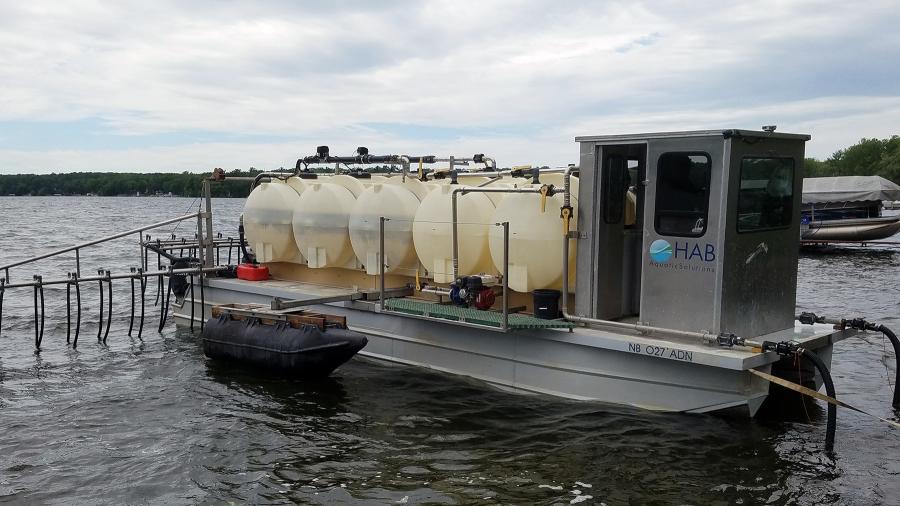
Helping revive and bring back lakes from the dead, so to speak, has been the mission of CLRR since its inception 11 years ago. As a center, it works directly and almost exclusively with regional lake partners.
“Lake management often involves years of treatment and application to reverse the damage from the past. With more than 25,000 lakes in Wisconsin and Minnesota, there is an urgent need to reverse eutrophication for overall health as well as for aesthetic reasons,” said Bill James, CLRR director.
CLRR also has studied Tainter Lake, Lake Menomin, Lac Courte Oreilles, Desair, Lake Tomah, North Pipe Lake, Lake of the Woods in Minnesota and the western basin of Lake Erie to help better understand algal problems and management options, said James, a senior researcher at UW-Stout’s Discovery Center, which includes CLRR.
The Center was founded by James to tackle lake eutrophication, or compromised water quality because of overfertilization. Phosphorus that has accumulated on lake bottoms is taken up in the summer by blue-green algae. The algae grow into dense scums that cause odor problems, release toxins that pose a human health issue, severely impair recreational use and reduce property values.
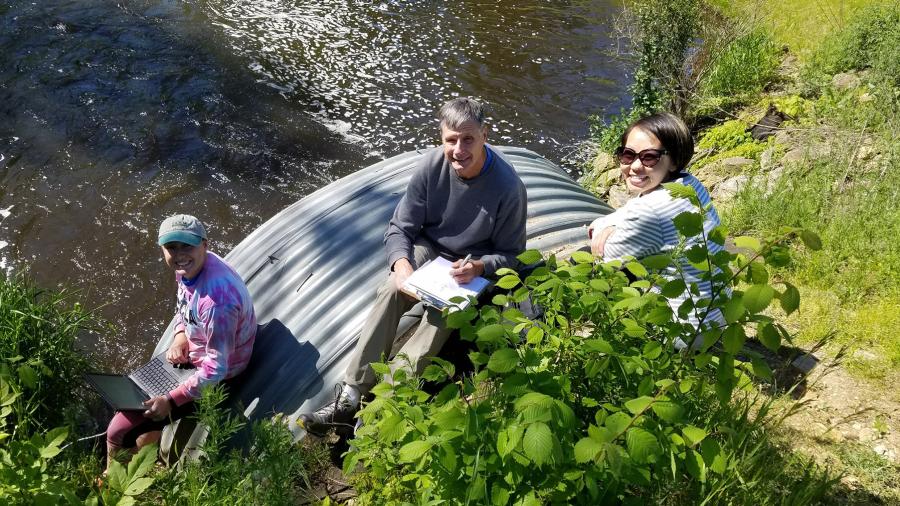
CLRR comes to the rescue by scientifically analyzing lake sediment in UW-Stout labs and developing a treatment plan.
Success stories
A shining example of success is Half Moon, a 135-acre lake in the center of Eau Claire. Work on Half Moon began a decade ago and will continue for at least another three years, including treatment in mid-May.
Treatment has focused on applications of alum, a chemical also used in cooking, which settles to the bottom and reduces phosphorous; and endothall, an aquatic herbicide that controls curly-leaf pondweed, which was growing out of control.
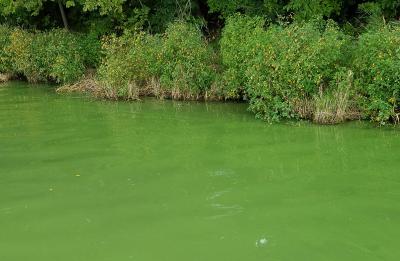
Prior to treatment, the Half Moon beach often was closed because of blue-green algal blooms and poor water quality, largely stemming from late 19th and early 20th century logging operations that disposed of animal waste on the ice each winter. Swimming in the lake, once popular, all but ceased and other recreational use declined for several decades.
James’ research discovered that Half Moon’s phosphorous issues are internal, requiring a targeted approach to heal it. The problem on most lakes CLRR has worked on, including Menomin and Tainter in Dunn County, is the opposite, stemming from phosphorous entering via the watershed.
Today, water clarity on Half Moon has improved dramatically, nearly 5 feet during the summer. Curly-leaf pondweed is much reduced, and native aquatic plants are rebounding. Lake phosphorus has declined by more than 60%, and nuisance algal blooms have decreased by more than 70%, James said.
The partnership between CLRR, the City of Eau Claire, Wisconsin DNR and the Eau Claire community “continues to work toward sustaining improved lake water quality for the future,” James said.
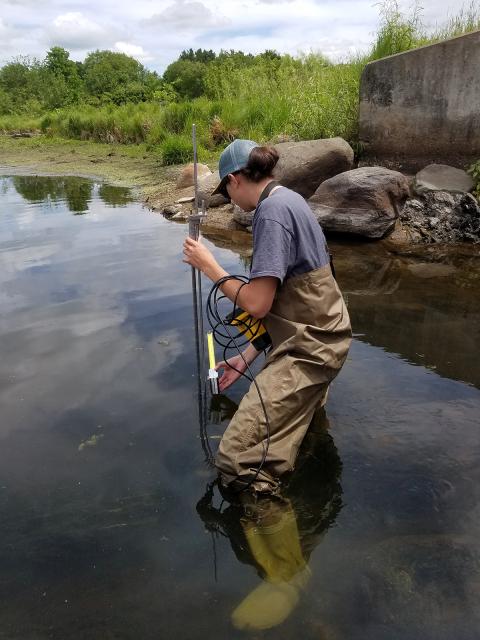
Long-term treatments can cost millions of dollars, but the results are priceless, said Steve Plaza, parks, forestry and cemetery manager for the city.
“In 2011, no one wanted to use the Half Moon because of water quality. In 2022, we will see fishing, swimming, kayaking, canoeing, paddleboarding, kids wading and an overall positive experience on or adjacent to the lake. Just people sitting on a bench looking at the lake is a positive experience,” Plaza said.
In Polk County, along with Long Lake, CLRR is working this summer on Cedar Lake, East Balsam Lake and Big Round Lake.
Lake improvement is a year-by-year process that involves a cycle of assessment, treatment and more assessment to recommend changes and improve rehabilitation, James said.
CLRR personnel launch boats every two weeks each summer to collect water and aquatic sediment samples for chemical analysis on the lakes that the Center manages.
“For example, is lake chemistry telling us more alum is needed next year? In the case of Long Lake, summer phosphorus and algal blooms have declined by over 60% as a result of the first two alum applications, and concentrations are meeting target goals. Summer water clarity has improved by 80%. This information tells us that management is on track so far for Long Lake,” James said.
Long Lake has received two partial alum applications since 2018 with another application scheduled this summer.
CLRR also analyzes sediment for consulting firms that are working on lake restoration projects in Minnesota, especially in the Twin Cities area.
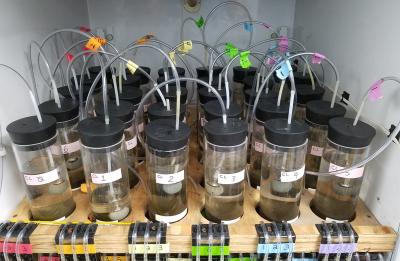
Experience and expertise
James previously was a research aquatic biologist for the U.S. Army Corps of Engineers Engineer Research and Development Center, Environmental Laboratory – Eau Galle Aquatic Ecology Laboratory, in Spring Valley, for 32 years.
He has a master’s degree in limnology from Kent State University and has taught an undergraduate course at UW-Stout in Aquatic Ecology and Management and a graduate course in Advanced Limnological Approaches.
Buzz Sorge, a retired lake management planner with the DNR, worked with James on CLRR projects.
“Bill has developed the technology and very technical process of analyzing sediment cores. It’s a very unique lab at Stout, and he has trained people very well. It’s incredible for us working at the DNR to have access to that kind of science Bill can do. The partnership with the DNR has been phenomenally successful,” Sorge said.
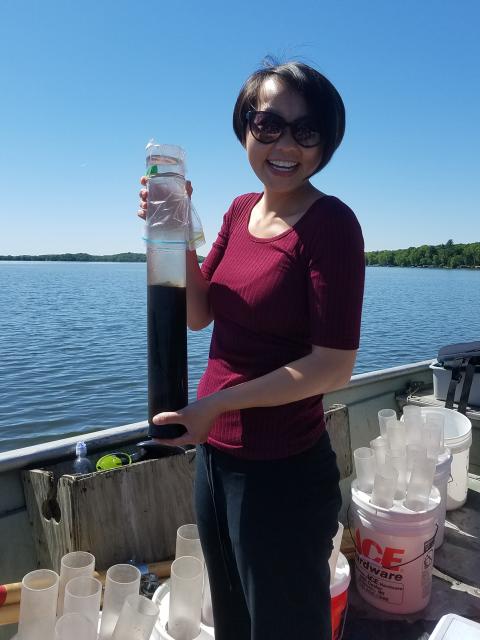
“The poster child is Half Moon. It was hyper-eutrophic — weed-choked and full of algae every year. It’s phenomenal how we’ve been able to turn that around with community support,” Sorge said.
Sorge said the DNR doesn’t have the staff to handle the work done by CLRR. It’s high-level science that otherwise isn’t available in the region except at consulting firms, he said.
James has published 60 peer-review research articles. “Bill is so good technically the way he thinks and problem-solves and how he applies the tools we have in our toolbox. He’s an expert at understanding the eutrophic aspect and is respected in limnological circles nationally and internationally,” Sorge said.
CLRR is self-funded through fees for its services. DNR lake planning and protection grants awarded to cities, counties and lake districts often fund the research.
CLRR is able to hire students, often three a year, who gain valuable research experience through a paid internship.
Mai Lia Vang, a 2018 UW-Stout graduate in environmental science with an aquatic biology concentration and 2020 graduate with a Professional Science Master’s in conservation biology, is a research analyst who manages day-to-day CLRR lab activities.
The university has an undergraduate program in environmental science, with a concentration in aquatic biology.
###





